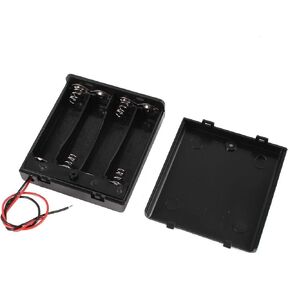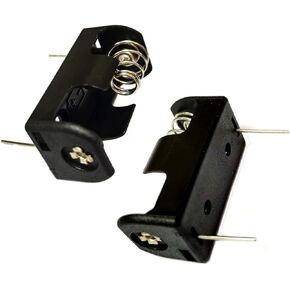- Shopping, made easy.
- /
- Get the app!
Specifications:
Operating voltage: DC5V
Applicable batteries: Batteries with a discharge stop voltage of 2.5~3.5V and a charging range of 2.8V to 4.2V are applicable
Power interface: Type-C power supply interface (power and power cord not included)
System languages: Chinese, English
Number of tests: 2 channels for charging and discharging measurement
Internal resistance measurement: Supported, using the DC two-wire method for measuring internal resistance
Charging function: Supported, automatically cuts off charging when fully charged (does not support charging of lithium iron phosphate batteries)
Discharging function: Supported, automatically stops when conditions are met, discharging current cannot be adjusted
Auto charging and discharging: Supported, battery is fully charged at the end of the auto mode
Cycle charging and discharging: Supported, adjustable for 1~9 cycles (only supported in auto mode)
Status indication: Supported
Heat dissipation method: Active cooling with a fan
Overheat protection: Supported
Discharge stop voltage: Adjustable in 11 steps from 2.5V to 3.5V
Discharge current: Maximum of approximately 1A non-constant current, non-adjustable, not suitable for self-modification
Charging voltage: Controlled by a dedicated battery charging chip, maximum of approximately 1A charging, charging stops when the current is less than 0.1A
Power failure preservation: Only saves setting parameters, does not save measurement data
Note:
When the battery voltage is below 2.8V, it cannot be charged. If the voltage is below 3V, a low current charging will be initiated. When the voltage is above 3V, charging will occur at approximately 1A. Once the voltage exceeds 4.2V, a trickle charge will be applied. The charging chip will automatically stop the charging process to prevent overcharging. If the charging current drops below 0.1A, it will trigger the charging to stop. If the voltage exceeds 4.2V and the high current charging continues, it may indicate a malfunction in the charging chip.
 Yoodelife 9V Battery Clip Connector, 9 Volt Long Cable Connection Soft Shell I Type, Black, 5 Pack
KWD 2
Yoodelife 9V Battery Clip Connector, 9 Volt Long Cable Connection Soft Shell I Type, Black, 5 Pack
KWD 2
 Transformer 4-Bay Battery Charger for Vocera B3000 Batteries. Power Supply Included
KWD 59
Transformer 4-Bay Battery Charger for Vocera B3000 Batteries. Power Supply Included
KWD 59
 Onwon 4 x 1.5V AA Battery Case Holder Leads Black w Cap Whith On/Off Switch 2 Pcs
KWD 2.500
Onwon 4 x 1.5V AA Battery Case Holder Leads Black w Cap Whith On/Off Switch 2 Pcs
KWD 2.500
 (Pack of 2 14250 Battery Holder, 1/2AA Battery Holder, ER14250 Battery Holder, 1/2AA 3.6V Battery Holder with PCB Solder Mounting Lead
KWD 3
(Pack of 2 14250 Battery Holder, 1/2AA Battery Holder, ER14250 Battery Holder, 1/2AA 3.6V Battery Holder with PCB Solder Mounting Lead
KWD 3